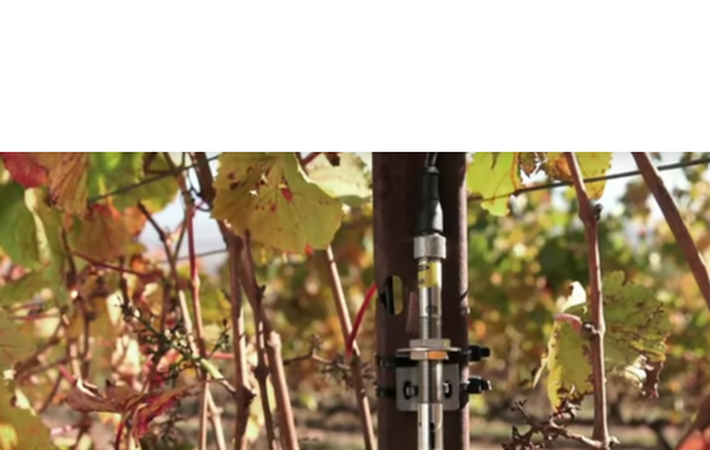
Published on 11/07/2016 | Use Cases
The Internet of Things (IoT) is enabling data-driven smart agriculture. The IoT is a network of technologies which can monitor the status of physical and other objects, capture meaningful data, and communicate that data over a wireless network to a computer in the cloud for software to analyze and help determine action steps. Typically, each data transmission from a device is small in size but the number of transmissions can be frequent. IoT involves many, many things interacting with each other to produce actionable information.
In crop farming, data analytics software can provide actionable information by combining information on current weather, the slope of the land, type of soil and exposure to sunshine with data captured by sensors measuring moisture, heat, chemicals and other conditions. Each sensor can monitor a specific condition or set of conditions. Water, fertilizer and pesticides can be applied in more precise quantities and locations and with better timing which will increase yields. The IoT can help alleviate food shortages by enabling more intensive use of farm land that results in higher outputs. The IoT can also help livestock farming or ranching be more productive in the use of water, energy, food and other resources and even help track the location of livestock. More IoT applications have become feasible because the cost and size of sensor devices continues to decrease and their sophistication for measuring conditions keeps increasing. Cisco estimates that 50 billion devices will be connected to the Internet by 2020.
Water and energy are the most important inputs for agriculture and their costs can make or break an agricultural business. Agriculture is very energy intensive. The IoT can result in more effective energy use for pumps, boosters, lighting and other purposes. The IoT can also help water use be more productive based on the type of soil and other conditions. In California, agriculture consumes about 40% of the freshwater available with a large amount of water being wasted by leaky irrigation systems, inefficient field application methods and the planting of water intensive crops in the wrong growing location. The IoT can make water use smarter for agriculture in irrigation efficiency and lower costs by monitoring and changing water volume, location timing and duration of flow based on data analytics.
An IoT network can remotely determine the status and working condition of equipment (open or closed, on or off, full or empty, etc.). The information can be actionable so a gate can be opened or closed or an irrigation pump turned on or off remotely to adjust the flow of water or to save energy or to take advantage of time-of-use energy pricing. Pumps, gates and other equipment can be monitored for vibration and other indications that maintenance or replacement is needed.
Ownership rights to data has emerged as an important business and legal issue as IoT business models have evolved. While some data may be from the public domain or licensed from third parties, an IoT business should try to own as much data as it can. The business that controls the most data will likely be the most successful. The revenue stream potential of such data may have greater revenue potential than from selling or licensing the software and hardware components of IoT networks.
The advances in sensing technology, the way that IoT physical components are combined into a network and the related data analytics software can have significant business value. Intellectual property (IP) protection is important. IoT system designers need to think both offensively and defensively in creating an IP strategy so they have the freedom to operate without a license from a third party and also provide a barrier to entry by a competitor. There are already more than 300 patents issued in which the term “Internet of Things” appears when the US Patent and Trademark Office (USPTO) data base is searched.
IoT networks need to be designed and implemented with adequate security and privacy protection. The threat to security and privacy may not be recognized to be as significant as in other types of networks since IoT devices have limited functionality and connectivity. But there are more points of possible intrusion and vulnerability in an IoT network. A network failure or hacker attack could have serious consequences. For example, hackers recently changed chemical settings in a U.S. water treatment plant; A hacker could attempt an intrusion in the application of crop chemicals, turning irrigation equipment on or off at the wrong time or in the mixture of ingredients at a food processing plant. As the implementation of IoT networks grows, the data produced can provide actionable information for regulatory authorities for water and energy pricing and other compliance purposes. The data can be the basis for enforcement actions so it must be reliable.
There will be liability issues if the IoT network fails or makes a wrong determination. Liability insurance will be needed by the IoT components and systems vendors that provide the network. Limiting liability by contract with a utility, state or local government or agricultural business may be feasible in the same way as for other equipment and software but contracts will not be possible in many consumer applications.
The IoT can be used to help determine when, where and how much water is needed in agricultural irrigation in times of El Nino as well as draught. It can also help livestock farming be done smarter. Deployment of an IoT network can make energy use more efficient and less costly in many aspects of farming. Although the IoT cannot change the type of soil where a crop is grown, it can provide actionable information to make water use more efficient and less wasteful, particularly in places where water is scarce.